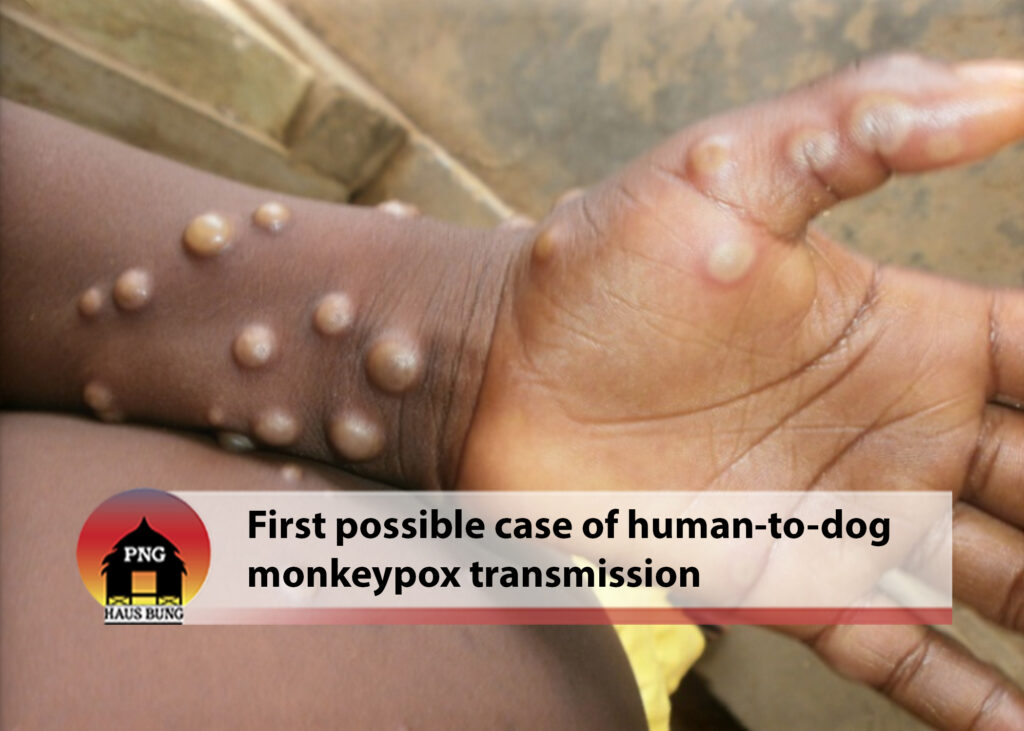The first possible case of human-to-dog transmission of monkeypox — recently reported in two men and their pet in Paris — had been a theoretical risk up till now, said Dr. Rosamund Lewis, technical lead on the monkeypox response for the World Health Organization.
The men, who live together and are in a non-exclusive relationship, were diagnosed with monkeypox at a hospital in Paris in early June.
Twelve days after their symptoms started, their 4-year-old Italian greyhound also started showing symptoms, according to a report published last week in the journal The Lancet.
The dog developed lesions and tested positive for the same type of monkeypox as one of the owners.
According to the report, the men said that they let their dog sleep in bed with them and that they had been careful to keep their pet away from other animals or humans from the start of their own symptoms — before the dog’s symptoms started.
“To the best of our knowledge, the kinetics of symptom onset in both patients and, subsequently, in their dog, suggest human-to-dog transmission of monkeypox virus,” the authors of the report wrote.
“Given the dog’s skin and mucosal lesions as well as the positive monkeypox virus PCR results from anal and oral swabs, we hypothesise a real canine disease, not a simple carriage of the virus by close contact with humans or airborne transmission (or both).”
The authors suggested that the study should prompt discussion on whether pets need to be isolated from their owners if they have monkeypox, and they called for further research.
Lewis said that previously, only animal-to-human transmission of the virus was reported, referencing a monkeypox outbreak in the US in which people were infected with the virus through pet prairie dogs.
“This is the first incident that we’re learning about where there is human-to-animal transmission,” Lewis said during a Washington Post Live event on Monday.
“This has not been reported before, and it has not been reported that dogs have been infected before.
“On a number of levels, this is new information,” she said.
“It’s not surprising information, and it’s something that we’ve been on the watch out for.”
She noted that within WHO, experts have been working with partners such as the World Organization of Animal Health and the Food and Agriculture Organization to address the issue.
“The messaging that has been given up until now is that pets should be isolated from the family members who may be infected,” she said.
“This has been an example of precautionary approach, precautionary messaging, because we didn’t have the information that this had ever happened before, it had not been
reported before, but it was a reasonable, cautious message to give. And now we have the first incident where this has actually occurred.”
Lewis said it isn’t clear whether the infected dog will be able to transmit the virus back to humans.
But sometimes, even when they don’t have all the evidence, public health profesionals have to figure out the most useful messaging that will allow people to appreciate their level of risk.
“This is an example where most pets will not be at risk, it may only be those who are actually in the household of someone who’s infected,” she said.
The US Centers for Disease Control and Prevention recently updated its page on monkeypox in animals to acknowledge that dogs can be infected with the virus.
“We are still learning which species of animals can get monkeypox,” the agency said. “While we do not know if reptiles, amphibians, or birds can get monkeypox, it is unlikely since these animals have not been found to be infected with other orthopoxviruses.”
The CDC also notes that infected animals can spread the virus to people, and it is “possible that people who are infected can spread Monkeypox virus to animals through close contact, including petting, cuddling, hugging, kissing, licking, sharing sleeping areas, and sharing food.”
The agency advises people with monkeypox to avoid contact with animals, including their pets.
Pets who had close contact with someone with monkeypox symptoms should be kept at home and away from other animals and people for 21 days after the most recent contact, the CDC said.
Infected people shouldn’t get close to their exposed pet; they should ask someone else within the home to look after it if possible.
If the infected person and the pet did not have close contact after symptoms started, the CDC recommends asking someone who lives elsewhere to look after the animal until there is a full recovery from the virus.
Source: CNN

